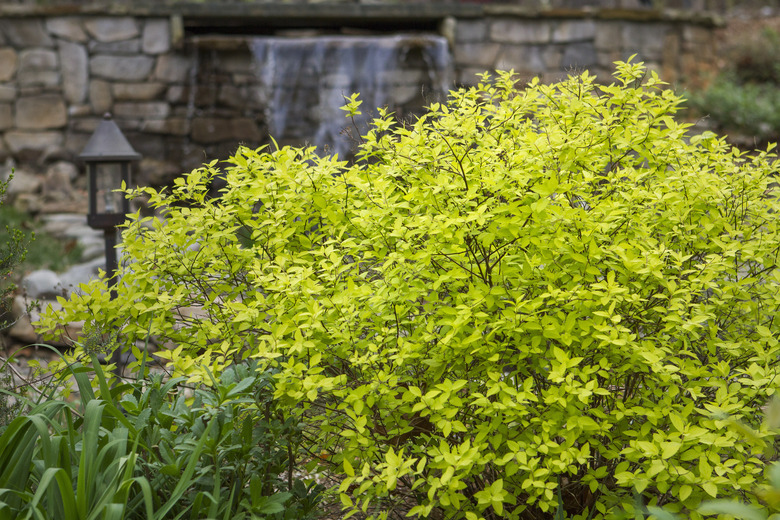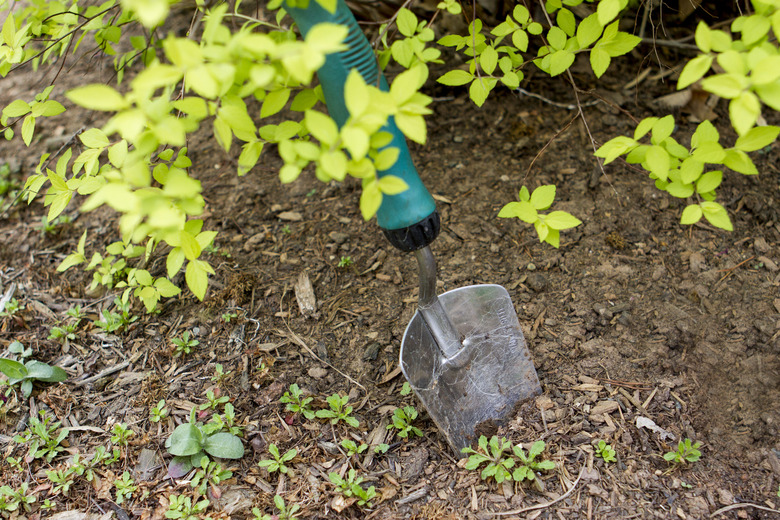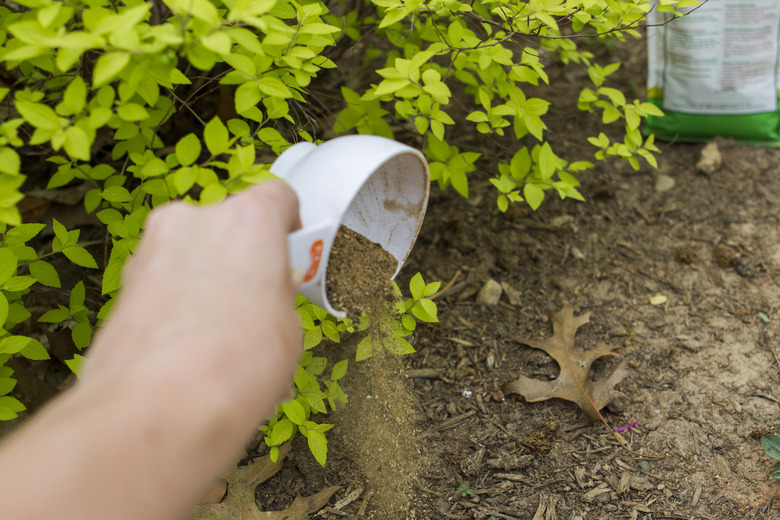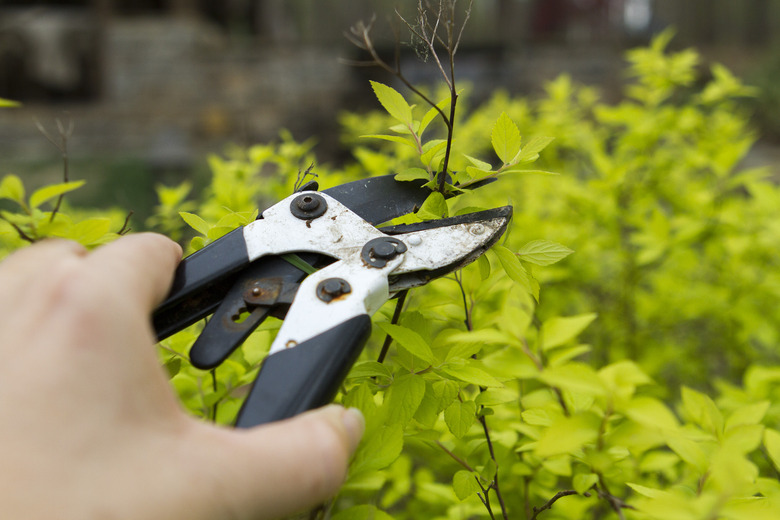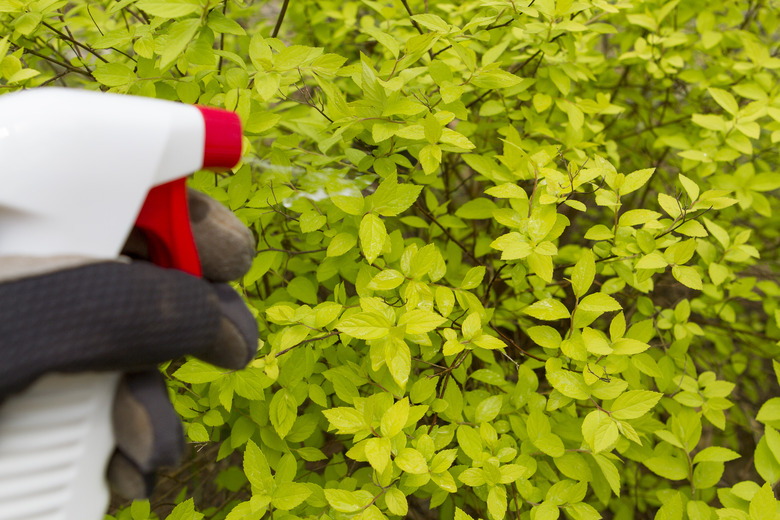How To Care For Kaleidoscope Abelia
Like a starlet perpetually striving for best-dressed status, "Kaleidoscope" abelia (Abelia x grandiflora "Kaleidoscope") updates its wardrobe from season to season. The red-stemmed shrub's lemon-bordered, chartreuse spring foliage switches deep green, with creamy- or golden-yellow edges in summer. Accessorizing the summer display, pale-pink buds and fragrant white flowers continue into fall, when the plant becomes a swirl of green, orange, yellow and red. In much of its growing range, "Kaleidoscope" retains its color through winter.
Watering "Kaleidoscope"
"Kaleidoscope" retains its brilliant variegation through the hottest summer in U.S. Department of Agriculture plant hardiness zones 6 though 10. Even so, it won't survive indefinitely without a drink. According to "Kaleidoscope's" breeder, Panoramic Farm of North Carolina, the shrub performs best in consistently moist soil. Before watering, insert a trowel 3 inches into the ground. If the soil on its tip is damp, wait. If it's dry, water slowly and deeply around the shrub's base. If it hasn't rained, 6 gallons of water for every square yard of ground "Kaleidoscope" covers provides 1 inch of water, a weekly ration adequate for clay or loam soil. If your soil's on the sandy side, provide 3 gallons per 1 square yard twice weekly.
Feeding "Kaleidoscope"
"Kaleidoscope" benefits from an annual feeding, timed in early spring before its new leaves emerge, or in early summer when its flower buds appear. It's happiest in acidic soil, so a meal of granulated fertilizer formulated for acid-loving plants such as azaleas (Rhododendron spp.), which grow in USDA zones 4 through 9, is best. After scattering 1/4- to 1/2- cup — or the label's recommended amount — evenly beneath the tips of the outermost branches, water it gently into the soil. Keep the fertilizer away from the trunk and foliage, or it may burn them.
When to Prune
Topping out at 3 feet tall with a 5-foot spread, "Kaleidoscope's" weeping form seldom demands heavy pruning. If vigorous growth leaves it shaggy, prune only what's necessary to restore a symmetrical shape. Reserve heavier pruning for its late winter dormancy, when removing older branches encourages vigorously blooming new ones. Take no more than one-third of them, so shrub keeps enough foliage to sustain it. Use clean, sharp pruning tools and disinfect them between cuts in a solution of 1 part household bleach to 9 parts water so you don't accidentally spread disease.
Pest Problems
Diseases typically ignore "Kaleidoscope," and most pests are indifferent to it as well. The most trouble you're likely to encounter comes courtesy of aphids, tiny pear-shaped, sap-sucking insects. They mass along the young stems and newly emerged leaves. In large numbers, they'll drench the plant in sticky, transparent honeydew. Hose them off with a blast of water. If that fails, spray "Kaleidoscope" until all its surfaces drip with nontoxic, ready-to-use insecticidal soap. The soap suffocates aphids it reaches, so eliminating the entire colony may require repeat applications. Follow the label's directions and wear washable, protective clothing, safety goggles, gloves and a face mask when spraying.
References
- San Marcos Growers: Abelia x Grandiflora "Kaleidoscope" PP 16,988
- Rodale's Basic Organic Gardening: A Beginner's Guide to Starting a Healthy Garden; Deborah L. Martin, Editor
- Missouri Botanical Garden Plant Finder: Rhododendron
- Missouri Botanical Garden: Abelia x Grandiflora
- Manual of Woody Landscape Plants, Fifth Edition; Michael A. Dirr
- University of California Statewide Integrated Pest Management Program: Aphids
